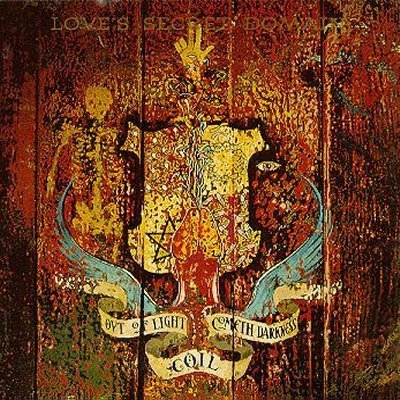- Administrator
- Albums and Singles
Like many, my first exposure to Coil was via their Nine Inch Nails remixes in the early 1990s, which, as a middle schooler, perplexed me more than anything else. It wasn't until I was a bit older and had exchanged some mix tapes that I heard Coil properly, and "got" it. While I might be in the minority by not ranking this album as my favorite from them, Love's Secret Domain still stands as a distinct and creative album that is artistically, as well as technically fascinating.
 
Looking back, I'm somewhat surprised I didn't hear this album earlier, because not long after the aforementioned NIN period but before delving into their catalog, I was a whore for pretty much anything Wax Trax put out, and I was, in fact, into the label around the time this album came out.Looking back, I would have probably been a bit better off laying off the KMFDM and looking more towards this disc.
Personally, my favorite Coil works tend to be the ones I heard first, which were mostly from mix tapes culled from Scatology and Horse Rotorvator, to this day still my two favorite works from them.While those discs straddled the line between what used to be and what is now "industrial" (for the abstraction of "The Sewage Worker’s Birthday Party" there was the catchy "Panic"), LSD flirted with techno and house music, which was a bit less of my "thing".
In hindsight, it's only the two singles, "The Snow" and "Windowpane" that are overtly using stiff 4/4 beats and squelchy 303 synths, and consequently the ones that sound the most of their era.They’re not necessarily dated, but at the same time not as timeless as the other songs either.
In comparison, "Things Happen" sound of no era in particular: a hallucinogenic cocktail of difficult to identify songs and rhythms, all of which come together perfectly, polished off with Annie Anxiety's inebriated vocals."Where Even the Darkness is Something to See" carries a similar vibe:a cut and pasted didgeridoo and erratic rhythm come together into a bizarre mutation that is almost unidentifiable.
While the techno/house theme runs throughout the album, it does not define it, nor does it restrict it:"Chaostrophy" makes no concessions to rhythms and instead links swirling layers of noise with a melancholy horn melody to wonderful effect.The closing title track also is, to me, the perfect culmination of the album:John Balance's snarling vocals and menacing electronics beautifully pervert traditional electronic "dance" music.
The "hallucinogenic" tag I mentioned earlier is one that applies to pretty much every song on this album, and given its title, I don’t think it’s accidental.As someone who doesn't use recreational drugs, I cannot say with certainty the relationship of them to this album, but I can imagine the influence, if on nothing else the ideal of experimentation.
That's one of the most amazing things hearing this album today:it was recorded 20 years ago.The idiosyncratic sound of this album is one that, even with an absurd amount of VST plug-ins and technical know-how, would be extremely difficult to replicate.Here, with just rudimentary samplers, MIDI, and analogue tape, Coil created something more original and creative than 99 percent of the world.
It's hard to imagine what experimental and electronic music would be today if this album had not been released.Artists like Autechre and Aphex Twin are indebted to Coil and their willingness to misuse technology and re-contextualize "conventional" sounds to their own ends.Even with its house tendencies, Love's Secret Domain could be released today and it would still be as lauded as it has been for the past two decades.
samples:
Read More
- Administrator
- Albums and Singles
I don't believe Sleazy for a minute when, in interviews, he calls Love's Secret Domain a "positive" recording. After making Horse Rotorvator, sounding more positive was probably as easy as finding something softer than a hammer. If there is a positive thread running through Coil's third full-length, songs like "Things Happen" and "Titan Arch" dye it black; if anything purely positive is left over, "Further Back and Faster" and "Chaostrophy" obliterate it entirely. I've been listening to L.S.D. for 15 years now, and I'm convinced that it is Coil's most beguiling record, a fun-house mirror that warps and subverts everything held up to it. Calling it their acid album is just insulting, because there's much more to it than the drugs that helped spawn it.
In a 1992 interview published in Option Magazine, Scott Lewis describes the lyrics on Coil's latest record as "lighter" and "more optimistic," and bafflingly, Peter and John concur. In fact, the same thing happens in numerous interviews.
I remember hearing "Love's Secret Domain" and "Teenage Lightning 2" for the first time and my opinion then was the same as it is now: in the wake of Horse Rotorvator's trials, Coil had opted to embrace deliriousness rather than dive further into the murk of their previous work. Perhaps their music had become lighter in some respects, but that didn't mean they had become lighthearted. Balance wasn't screaming about Nero's long hot tongue anymore, but he was meditating on sick love, quoting William Blake and Roy Orbison in the same song, and Peter was piling sound upon sound, cutting heavily processed vocals with Latin rhythms and caustic bursts of bubbling noise. By working with Little Annie, Marc Almond, This Heat's Charles Hayward, Juan Ramirez, and Billy McGee, Coil opened up their sound and gave their audience a chance to come up for air, but at the same time they became subtler, devious even, and more enigmatic.
On L.S.D., martial rhythms replace dance floor rhythms, and resonant synthesizers replace apocalyptic horns, but Coil's subversive spirit remains intact. The proof isn't in every song, but in the way certain pieces color others. On one half of the album, "Windowpane" and "The Snow" celebrates ecstasy and hedonistic impulses, but the lurch of "Further Back and Faster" scrutinizes both, with lines from Charles Laughton's Night of the Hunter utilized to blur the line between love and hate. Laden with pounding drums and constantly shifting rhythms, "Further Back" disrupts the playfulness of the songs around it by taking that playfulness to its limit. "Chaostrophy" follows suit; radio signals, distortion, orchestral fragments, frustration, and sadness all fight with each other as one of the most beautiful melodies Peter ever wrote emerges from the chaos, half triumphant and half resigned. Billy McGee's arrangement is stunning, and Julia Girdwood's oboe sounds heavenly among the strings and reverberating noise, but it's resigned, too, almost too pretty for the chaos around it. "Lorca Not Orca" follows, but the Latin rhythms from earlier have lost their vigor, and all that's left is for Jhonn to sing his ode to mad love. As he puts it, "innocence is dripping red."
Thematically, there are numerous reasons to characterize L.S.D. as a foreboding record. Sonically, I think its ominous character is obvious. Play it back to back with Horse Rotorvator and Gold is the Metal with the Broadest Shoulders and the jubilant character it is so often assigned disappears instantaneously. Coil's acid album, or their party album, or their dance record isn't an acid-dance-party record at all. Rather, it exists in continuum inhabited by the albums that precede it, and even by some that follow it. But there isn't another record like it out there; nothing else in my collection successfully combines so many ideas into a single statement.
Personally, I'll always remember hearing "Teenage Lightning 2" for the first time and being carried away by its density. I remember feeling a little stupid when I discovered that some of the melody was actually a heavily processed voice, and I remember the excitement I felt when I realized what could be done with texture and noise. Coil helped open my brain up, even without the use of drugs, and their influence, largely due to this album, has stayed with me to the present.
Ultimately, Love's Secret Domain changed the way I listen to music; it was the right record for me at the right time, and after 15 years I'm still hearing new things in it every time I listen.
 
Read More
- Administrator
- Albums and Singles
In the summer of 1993, my friend Eric showed up at my house with a grocery bag full of CDs that he swore I needed to hear. Among them were Lustmord's Paradise Disowned and Heresy and just about everything available at the time from Coil. I had already been exposed to Throbbing Gristle and Psychic TV, but this was my first taste of Coil and I started with Horse Rotorvator because I figured that I needed to hear any record that kicked off with a song called "The Anal Staircase" immediately.
By the time I made my way to Love's Secret Domain, I was thoroughly creeped out.It took dance-floor remixes of "The Snow" from Jack Dangers to warm me up to Love's Secret Domain. Those mixes sounded like bits of the Coil track slapped over an extended version of Meat Beat Manifesto's Psyche Out and that was something I could dig. All of the talk of blood and sucking and brains was too much at first, but eventually Love's Secret Domain wound up as the only Coil full length that I owned.
 
I had a cassette copy of LSD that stayed on fairly permanent rotation in my car as I delivered pizzas and traveled back and forth from my apartment to my college campus through the mid 1990s.As I listened to the cassette, I always felt like I was waiting to get to "Windowpane" or "The Snow" or the title track—the more accessible and dance-oriented songs that were surrounded by Coil's more spaced-out compositions. I liked all of it, but the songs more closely-related to the Wax Trax dance aesthetic were my favorites.
But listening back on the album now, it seems absurd to think that those songs were accessible by any standards other than Coil's.If the bad-trip lyrics from "Windowpane" weren't enough to send ravers running for the exit, the absolutely dead-creepy delivery surely was. At the time, I was wrapped up in a subculture where each new band was inspired to outdo the filth and darkness of the band before, and I was perhaps a little blind to just how subversive and menacing this album gets.
One year we opened up our dorm to local disadvantaged neighborhood kids and we decorated the halls with typical Halloween adornments. I got to pick the music for our hallway since most of the guys around me were off getting sloshed, so I stuck on an eerie mix of Lab Report's Unhealthy, early Skinny Puppy, and selected tracks from Love's Secret Domain and watched as kids peered into my dorm room in horror.
It was all clearly too much for a young mind to take.
 
Read More
- Administrator
- Albums and Singles
The new CD edition of ‘Wounded Galaxies Tap at The Window’ is now available from the Cyclobe shop. It comes in a full colour deluxe laminated wallet containing a fold-out poster with artwork by Alex Rose. A new film is available for view at the Cyclobe site as well.
CYCLOBE
WOUNDED GALAXIES TAP AT THE WINDOW
Compact Disc
25th July, 2011

The new CD edition of ‘Wounded Galaxies Tap at The Window’ is now available from the Cyclobe shop. It comes in a full colour deluxe laminated wallet containing a fold-out poster with artwork by Alex Rose.
Read More
- Administrator
- Albums and Singles
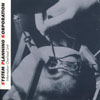
While they might not be as lauded as their contemporaries, at least in relative terms, the Graeme Revell fronted SPK was one of the essential contributors to "industrial" music, as well as the various permutations of it that came afterward. This, their debut full-length album, carefully balances the abrasive harshness, but also hints of moody, depressive ambience that would define their future.
Side Effects/Mute
SPK has always been, at least to me, one of the "big three" innovators in early industrial music, alongside Throbbing Gristle and Cabaret Voltaire.However, they always seem to be considered third on that list, and I can’t completely understand why.Perhaps it was because, even at the time, they were one of the more "extreme" practitioners of the genre.Early work, especially Information Overload Unit, was more on the noisy end of the spectrum than the harsher TG stuff, so that may have marginalized them somewhat.Imagery-wise even they leaned towards the more disgusting and confrontational, using autopsy images throughout their work and a skewered penis on the Meat Processing Section single, which definitely out-grossed TG and CV.Or perhaps it was because their transition to more conventional music was more abrupt (and seemingly more forced) then their contemporaries.
Throbbing Gristle broke apart before they had a chance to fully embrace more commercial sounds, and Cabaret Voltaire kept their paranoid, creepy edge when they started adding in danceable beats and actual singing.SPK, on the other hand, went drastically commercial with 1984's Machine Age Voodoo, keeping only the occasional bit of metal percussion from their early days.A recent revisiting of the album just screamed generic 1980s cheesy synth pop, a far cry from their innovative, experimental beginnings.
Information Overload Unit, released in 1980, remains their most aggressive and harsh album, matched only by the "Slogun" single. The original vinyl was split in half, with the "Ultra" A-side consisting of the manic, hostile pieces, while the "Hyper" side is the more bleak and depressive tracks, a sound they would perfect even more on the following Leichenschrei album.
The buzzing feedback and delay-drenched opening of "Emanation Machine R. Gie 1916" sets up the rest of the album perfectly, launching full on into what sounds like malfunctioning machinery crashing onto itself.Roars, feedback, and power tools mask a subtle, but perceptible rhythm undulating low in the mix that eventually is revealed as a rather simple, but effective analog drum machine loop beneath the chaos.
Aggression wise, "Emanation Machine" is matched only by "Berufsverbot," which closes the "Ultra" half of the album.Focusing more on junk metal percussion, it isn’t too far removed from a less theatrical, more hate-filled take on early Neubauten, complete with Revell's barked German vocals."Suture Obsession" brings in a bit of the squalling, damaged guitar sound that characterized their earliest, almost punk work, although tapes, synth noise and an almost buoyant bassline do their best to obscure it.
On the opposite side, "Ground Zero: Infinity Dose" somewhat bridges the two styles, as its pace is slow and plodding, but the sound is more harsh and aggressive.Rather than barked or screamed vocals, here they are processed beyond recognition, like the smallest piece of humanity left in a mechanized disaster.The remaining tracks tend to be more restrained, focusing a lot on slow, reverberated analog beats and the occasionally raw synth stab, especially on "Stammheim Tortukammer" and "Retard.""Epilept: Convulse" is the closest thing to an actual "song" on this album:a steady synthetic rhythm and noisy, but restrained electronic swells appear throughout, never pushing into the world of pure noise, but with a greater sense of structure and direction compared to the other tracks.
While SPK diversified their sound more after this album, Information Overload Unit remains probably their harshest and most dissonant work, without which I doubt the death industrial scenes of Cold Meat Industries and Tesco would exist.Although it definitely leans into formless noise, there is a rhythmic undercurrent that sets it apart and gives it its identity.Leichenschrei is a bit more fleshed out and fully realized in comparison, but this album is an important piece of their history, as well as the entire spectrum of dark and aggressive music.
samples:
 
Read More
- Administrator
- Albums and Singles
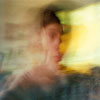
While he's spent much of this year designing and composing his Ante Algo Azul subscription series, Szczepanik has managed to also complete this full-length album, consisting of a single, beautiful piece of lingering ambience. Released on Christoph Heemann's Streamline label, it is a heartwrenchingly gorgeous piece of melancholy sound that is wonderfully unique and sounds like no one else.
The subscription series thus far seems like an ideal outlet to try new and diverse approaches to music, while this album is a culmination of a style he has essentially perfected.What he does best is composing emotional, expressive expanses of sound, conveying far more in the way of feeling and humanity than the genre is known for.
Drone is over-used to the point of almost being pejorative, so I'm hesitant to even mention it, but the genre’s staunch minimalism and attention to detail is definitely prevalent here, but it in the truly respectable classic sense.Drone does not have to be synonymous with lazy and repetitive, and here it most definitely is neither.Szczepanik works with natural, symphonic like rich tones, forceful and commanding, but not oppressive or heavy.
The disc opens with deep, resonating notes, slow and melodic, but also dynamic, constantly varying and shifting all throughout.Rather than the slow, often tedious build of similar artists, this disc just launches into the rich atmospheres.The album essentially feels like that heavily emotional, but beautiful and powerful moment of a great film stretched out for its 47 minute duration.
Throughout the piece, the sound builds up to dramatic crescendos before falling back to more pensive, quiet moments before reaching up again to even more dramatic heights, creating a cyclic, but still varying structure that continues throughout.The dramatic moments keep getting bigger and richer until there is essentially nowhere else to go, as the piece then comes to its pensive, funereal ending.
I've referred many times to the feeling and emotion that Please Stop Loving Me conveys throughout, and I must say that it is really a defining facet of the album, and also one that feels extremely subjective based on mood.During some listens it felt pained and agonizing, with a sense of loss that music rarely conveys.At other times it was much more glorious and uplifting, radiating a natural beauty that few albums can match.
Within that trite and generic "drone" label, I'd have to say that this is on par for me with the best Organum works, which is always a high water mark for me.There are very few albums like this that can remain enchanting with each and every listen, with new subtle elements to be heard.For such a relatively new artist, Szczepanik has the talents and ability of someone with a much larger discography, which makes this album all the more impressive.
samples:
 
Read More
- Administrator
- Albums and Singles
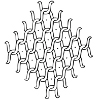 I have historically been quite fond of Barn Owl's work, but I sometimes find their extreme malleability a bit frustrating.  This collaboration with Ellen Fullman and Theresa Wong takes that trait a bit further than usual, as there is very little here that is immediately identifiable as "Barn Owl."  Perversely, though, that works just fine–in fact, all of the artists involved are almost completely and unrecognizably subsumed by the rich and vibrant drone music they've created.  This collaboration is so perfect and seamless that it sounds like a completely new band rather than the some of its parts.
I have historically been quite fond of Barn Owl's work, but I sometimes find their extreme malleability a bit frustrating.  This collaboration with Ellen Fullman and Theresa Wong takes that trait a bit further than usual, as there is very little here that is immediately identifiable as "Barn Owl."  Perversely, though, that works just fine–in fact, all of the artists involved are almost completely and unrecognizably subsumed by the rich and vibrant drone music they've created.  This collaboration is so perfect and seamless that it sounds like a completely new band rather than the some of its parts.
This is a reissue of a 2010 LP that vanished quite quickly.  The album takes its name from the Headlands Center for the Arts, where it was recorded.  That fact is notable because Ellen Fullman's massive self-invented Long String Instrument requires an entire large room and several days of set-up and tuning.  I suspect it is not very easy to arrange a collaboration with her.  Significantly, Wong (a cellist), Fullman, and Barn Owl are additionally joined by producer The Norman Conquest, who contributes some acoustic guitar and moaning wordless vocals.  That guy has been popping up on a lot of great albums lately.  In fact, he might actually be the most important single force in this entire collaboration: Headlands owes a lot of its success to his unusual production and mixing.
The most striking aspect of this release is that the various instruments rarely seem to have an audible attack–everything floats and drifts without any clear sounds of notes or chords being struck.  The second big thing is that all of the instruments bleed together, but not in a murky way…more in an "organic, amorphous, and edgeless wall of sound" way.  It is very difficult to tell which sounds are coming from which instruments or which performers, aside from those emanating from Fullman.  There is nothing that can be described as conventional or "rock" about Evan Caminiti and Jon Porras' guitar work–they must have either used EBows or just been especially masterful at harnessing feedback.  Wong, for her part, seems to just pick one note to slowly and somberly bow away at.  That should make for a dull or toothless album, but Fullman's dense and vibrant oscillations tend to make the simplest things seem compelling and alive.
A drone band could not possibly hope for a better anchor than Ellen and her Long String Instrument.  Barn Owl and Wong certainly manage to weave a beguilingly shimmering and undulating haze for almost forty minutes, but it is Ellen's massive buzzing strings that give its album its gravitas and heft.  Without that heavy omnipresent thrum, this album would be too vaporous to stand out much from the many other ambient drone albums pouring into the world.  The album's sole small weakness is that there isn't much to distinguish these pieces from each other aside from small details (i.e. someone is scraping a pick across the strings at the head of the guitar near the end of "The Light"), but they certainly combine to form a transfixing, egoless, and remarkably coherent whole.  I am not at all surprised that this is a great drone album, but I was definitely caught off-guard by how beautifully and intuitively this quintet cohered into a natural-sounding single entity. This stands with the best work of any of its participants.
Samples:
 
Read More
- Administrator
- Albums and Singles
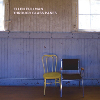 Fullman and her Long String Instrument have been quite active with collaborations, commissions, and residencies over the last few years, but this album is her debut full-length as a solo artist.  On one hand, that is quite remarkable, as she began working with her self-invented instrument of choice just about three decades ago.  On the other hand, the wait makes perfect sense, as the instrument's limited range and versatility make it a very difficult foundation to base an entire album upon.
Fullman and her Long String Instrument have been quite active with collaborations, commissions, and residencies over the last few years, but this album is her debut full-length as a solo artist.  On one hand, that is quite remarkable, as she began working with her self-invented instrument of choice just about three decades ago.  On the other hand, the wait makes perfect sense, as the instrument's limited range and versatility make it a very difficult foundation to base an entire album upon.
I'm sure that Ellen Fullman is not the first person to string wires across the entire length of a room (Alvin Lucier springs to mind), but her Long String Instrument is definitely unique in its complexity and scale: it features dozens of wires over 18 feet in length tuned in Just Intonation, an uncommon ratio-based tuning most famously used in LaMonte Young's epic "The Well-Tuned Piano."  Fullman's instrument also requires its own notation to "choreograph" its unusual playing technique (the performer walks slowly back and forth dragging their resin-covered fingers along the strings).  The overall effect is akin to a slow-motion raga being performed by a bunch of buzzing and humming power lines.  It's admittedly very impressive and unusual (probably much more so when experienced live, as the resonance of the performance space itself is a necessary part of the instrument), but it is also a very, very specific niche to be constrained to.
Wisely, Fullman only includes one completely pure Long String Instrument piece, the metallic and dissonant drone of "Event Locations No.2," which focuses on the beating created by uncomfortable harmonies.  The album's title piece also relies exclusively on the instrument, but Ellen percussively employs a "box bow" to achieve a strangely clipped autoharp effect.  My favorite pieces, however, are the two that involve other musicians, both of which were originally composed for Kronos Quartet and are very loosely based on Geeshie Wiley's timeless and singularly bleak "Last Kind Words Blues."  Normally, the idea of someone appropriating a simple, gut-level American Primitive classic for elaborate and expensive contemporary sound art would anger me, but Ellen's transfiguration is imaginative and unrecognizable enough to escape my wrath.
The sole significant difference between the two Wiley-based pieces ("Flowers" and "Never Gets Out of Me") is that one features mournful violins (and an interloping flock of sparrows) and one features a mournful cello.  Ellen went about composing the violin and cello parts quite similarly, taking selected segments of Geeshie's original melody and reconstructing them to mimic North Indian vocal music.  That approach is certainly fairly novel and effective, but a lot of the power stems from the simple fact that Fullman's heavily texture- and harmony-based music feels more complete with the addition of melody (and some new textures don't hurt either).  The trade-off, unfortunately, is that my ear is then drawn mostly to the melodic foreground.  That, lamentably, is Though Glass Panes' tragic flaw: the Long String Instrument is probably best used as an accompaniment rather than as a focal point (on album, anyway).  Ellen's artistry relies far too heavily on process, performance, and scale to reach its full potential on a recording.  Still, I was very much impressed by Through Glass Panes on a purely cerebral level: during its best moments, it certainly felt like Fullman was on the verge of warping both time and music into something uniquely her own.
Samples:
 
Read More
- Anthony D'Amico
- Albums and Singles
 This latest release from the long-running duo of Jonnine Standish and Nigel Yang is quite a bombshell, as Rhinestones was "inspired by a recent infatuation with 'eerie and gothic country music.'" To my ears, HTRK drawing inspiration from classic country heartache is already a winning formula right out of the gate, yet Rhinestones is even better than I might have hoped, as the Melbourne-based pair have spiced that new direction up further by filtering it through a "narcotic, nocturnal lens" in order to "map enigmatic badlands of strung out beauty" (count me in!). In less poetic terms, that means that Rhinestones is full of acoustic guitars, heartbreak, and half-sultry/half-ghostly vocal melodies and that every single one of these nine songs attain some degree of greatness. While yet another excellent HTRK album is hardly unexpected territory, I was nevertheless legitimately floored by how masterfully Standish and Yang executed this new vision, as Rhinestones is a beautifully stark, sensual, and effortlessly psychedelic tour de force that somehow also fitfully evokes great '80s pop in the vein of Pat Benatar. That is quite an impressive feat. This album will deservedly be all over "best of 2021" lists next month.
This latest release from the long-running duo of Jonnine Standish and Nigel Yang is quite a bombshell, as Rhinestones was "inspired by a recent infatuation with 'eerie and gothic country music.'" To my ears, HTRK drawing inspiration from classic country heartache is already a winning formula right out of the gate, yet Rhinestones is even better than I might have hoped, as the Melbourne-based pair have spiced that new direction up further by filtering it through a "narcotic, nocturnal lens" in order to "map enigmatic badlands of strung out beauty" (count me in!). In less poetic terms, that means that Rhinestones is full of acoustic guitars, heartbreak, and half-sultry/half-ghostly vocal melodies and that every single one of these nine songs attain some degree of greatness. While yet another excellent HTRK album is hardly unexpected territory, I was nevertheless legitimately floored by how masterfully Standish and Yang executed this new vision, as Rhinestones is a beautifully stark, sensual, and effortlessly psychedelic tour de force that somehow also fitfully evokes great '80s pop in the vein of Pat Benatar. That is quite an impressive feat. This album will deservedly be all over "best of 2021" lists next month.
Heavy Machinery/N&J Blueberries
This album is an extremely impressive example of how an absolutely gorgeous album can result from a very stark and simple palette, as Rhinestones is basically just an acoustic guitar, an occasional drum machine click, Standish's breathily sensuous voice, some great songs, and plenty of unerring instincts. While the whole album is wonderful, it starts to become something transcendent at the end of the second piece. "Valentina" initially sounds like a lovesick folkie got the hypnagogic David Lynch/Julee Cruise treatment, but it ends in unexpectedly heavy fashion, as the final line "can you remove it from my finger?" locks into a haunting spiral of looping repetition. That cool surprise then happily seques into a three-song run of absolutely killer songs. On "Sunlight Feels like Bee Stings," what initially sounds like a sadness-soaked breakup song quickly blossoms into something darkly sexual and swirling with understatedly beautiful ripples of echoing psych guitar. The following "Siren Song," on the other hand, only lasts a mere 49 seconds, yet every single one of those seconds rules, as Yang unleashes a phantasmagoric reverie of hollow, wobbly chords and string scrapes augmented with little more than murmured vocals and a slow rhythm of finger snaps.
"Fast Friend" is another quiet masterpiece of psych guitar, approximating a sultry, bleary Pat Benatar cover with a slinky drum machine pulse and host of painterly hallucinatory touches. Some artists make great psychedelia with cool layering and inspired juxtapositions, but Yang is the sort that can make just a single note or chord sound amazing and I am very much into it. The rest of the album is rounded out by a classic HTRK-style single "Real Headfuck" and a few seemingly lesser pieces that are ultimately elevated by great outros. Yang and Standish are truly in peak form on this album, as the vocals seductively dance over a simmering array of cool backdrops and every last hand clap or string scrape is executed with flawless timing and maximum impact. If there is any caveat with Rhinestones at all, it is only that it might feel a bit too melancholy for some, but I found these songs to be a lot like the old joke about New England weather: if a song seems unmemorable or oppressively sad at first, odds are quite strong that something cool and unexpected is about to dramatically change that trajectory for the better. This is a hell of an album.
Samples can be found here.
Read More
- Anthony D'Amico
- Albums and Singles
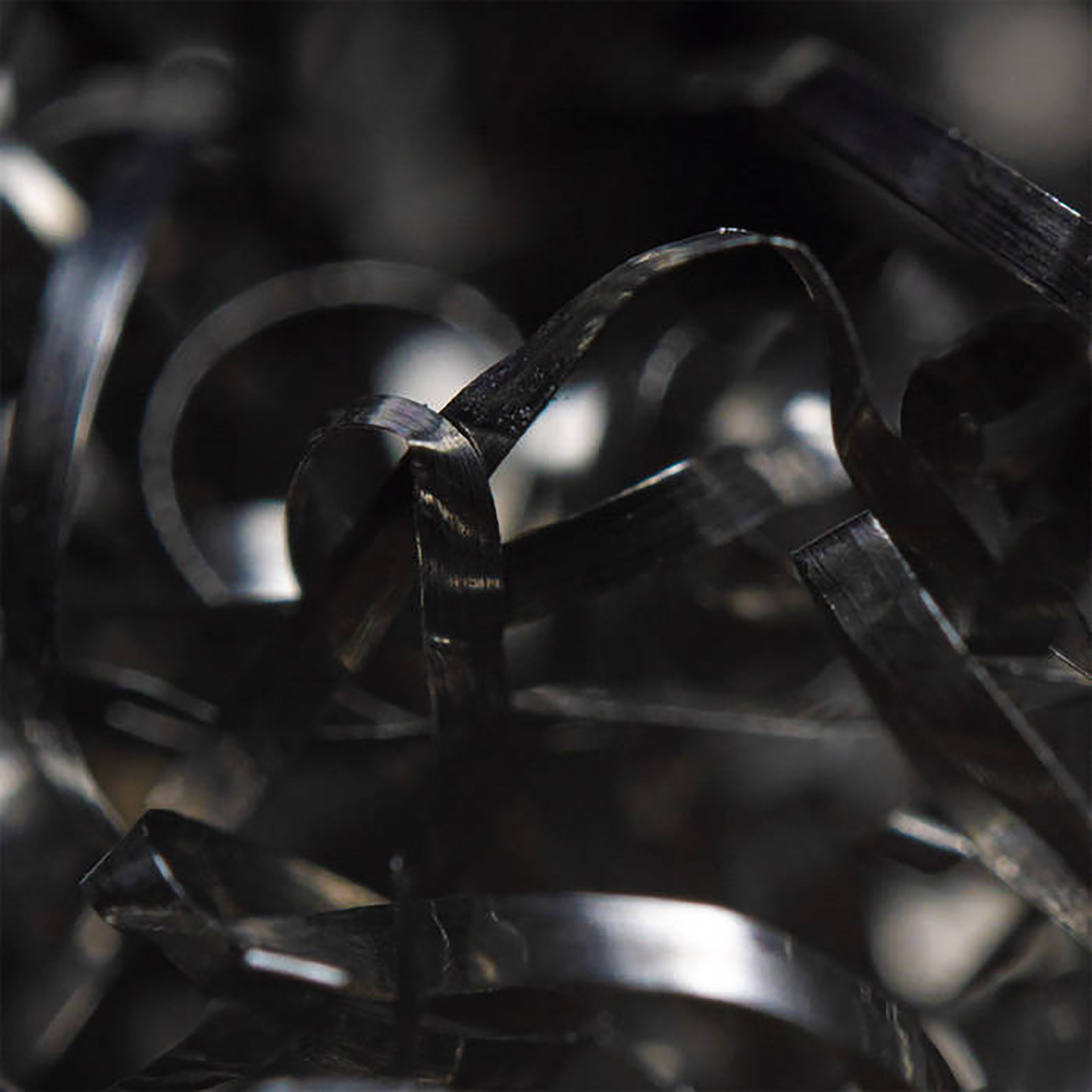 This is my first encounter with the unique fare of Berlin's One Instrument Records, but I have probably stumbled upon Felicity Mangan's work before, as she released an EP of animal-sourced sound art on Longform Editions back in 2019 and she is also half of the duo Native Instrument.  While it may sound like a stretch to call the multi-directional "quasi-bioacoustic sound piece" of her Longform EP Stereo'frog'ic "normal," it is nevertheless fair to say that frogs and homemade speakers are considerably closer to Mangan's comfort zone than a harmonica album (which is good, as I generally loathe harmonicas). And yet here we are: Bell Metal Reeds is an entirely harmonica-sourced album (Mangan picked one up at a flea market in Hamburg right before the pandemic). In most cases, learning that someone recorded a solo harmonica album over lockdown would—at best—elicit a wince, heavy sigh, or torrent of expletives from me, yet Mangan has somehow managed to wield the instrument so unconventionally and so beautifully that my mind has been properly blown. This is an incredible album, at times recalling everything from classic Kranky fare a la Windy & Carl to Neu! to Chris Watson.
This is my first encounter with the unique fare of Berlin's One Instrument Records, but I have probably stumbled upon Felicity Mangan's work before, as she released an EP of animal-sourced sound art on Longform Editions back in 2019 and she is also half of the duo Native Instrument.  While it may sound like a stretch to call the multi-directional "quasi-bioacoustic sound piece" of her Longform EP Stereo'frog'ic "normal," it is nevertheless fair to say that frogs and homemade speakers are considerably closer to Mangan's comfort zone than a harmonica album (which is good, as I generally loathe harmonicas). And yet here we are: Bell Metal Reeds is an entirely harmonica-sourced album (Mangan picked one up at a flea market in Hamburg right before the pandemic). In most cases, learning that someone recorded a solo harmonica album over lockdown would—at best—elicit a wince, heavy sigh, or torrent of expletives from me, yet Mangan has somehow managed to wield the instrument so unconventionally and so beautifully that my mind has been properly blown. This is an incredible album, at times recalling everything from classic Kranky fare a la Windy & Carl to Neu! to Chris Watson.
Happily, there is very little on this album that is recognizably sourced from a flea market harmonica, which is a good thing in my book. The even better thing is how transcendently Mangan was able to repurpose her Hohner Echo Harp's sounds and the impressive variety of compositions that resulted. The opening "Echo Harp 1" kicks off the album in especially sublime fashion, as the first half unfolds as sensuous, wobbly drone swells enhanced with flutters of dreampop shimmer that lazily swoop around the drones like an iridescent bat. It almost sounds like Mangan deconstructed drone music and somehow wound up with something languorously sensual instead. Curiously, Mangan opted to shift gears midway through the piece, so the final minutes are more akin to texturally confused drone metal than sexy harmonica ambient. I am bit disappointed by that transformation, as the first half was brilliant, but there is an eerie bent note in the final section that I like, so all is forgiven. "Echo Harp 2" is another big surprise, as it initially resembles an ancient war procession shrouded in a flickering psychedelic haze. Gradually, however, a throbbing drone slowly rolls out of the enchanted fog to launch a final act that resembles a stretched, smeared, and deconstructed motorik rhythm enhanced by the eerie whistle of a passing ghost train. While the first two pieces start off as near-masterpieces and end as merely very good, "Echo Harp 3" manages to sustain its perfection all the way to the finish line, resembling a wonderfully sensuous and spacey instrumental in the Windy & Carl vein (albeit a bit synthier-sounding than that comparison suggests). The album winds to a close with yet another surprise stylistic detour, as "Echo Harp 4" begins life as a pulsing mass of psych drone, but evolves into a compellingly polyrhythmic twist on a jangly drone rock band with an unusual effects palette. That adds up to four surprising, inventive, and beautifully crafted songs in a row, so I guess I am now a raging Felicity Mangan fan. If she can work this kind of magic with the insane constraint of exclusively using a flea market harmonica, her potential must be damn near limitless.
Samples can be found here.
Read More
- Duncan Edwards
- Albums and Singles
 On his first solo album since 2015, Duane Pitre takes figures/motifs from a "justly tuned" piano and uses his Max/MSP-based generative network to convert them into data which is then sent to two polyphonic microtonal synthesizers which have patches he designed. There is also some controlled improvisation interacting with the piano-reactive electronics. That may be clear to many readers, but it is impressively baffling to me. No matter, I often enjoy the benefits of things I don't fully understand: hydroelectric power, photography, bees making honey, and sound "living in the grooves" of vinyl records, to name but four. So it is with this lovely series of degenerative musical feedback loops. They also have a consistently pleasing sound and invite inner contemplation and a sense of interconnectedness.
On his first solo album since 2015, Duane Pitre takes figures/motifs from a "justly tuned" piano and uses his Max/MSP-based generative network to convert them into data which is then sent to two polyphonic microtonal synthesizers which have patches he designed. There is also some controlled improvisation interacting with the piano-reactive electronics. That may be clear to many readers, but it is impressively baffling to me. No matter, I often enjoy the benefits of things I don't fully understand: hydroelectric power, photography, bees making honey, and sound "living in the grooves" of vinyl records, to name but four. So it is with this lovely series of degenerative musical feedback loops. They also have a consistently pleasing sound and invite inner contemplation and a sense of interconnectedness.
The key to why Omniscient Voices pleases the ear may be “just tuning.” This is an important part of the debate about how music should be played and composed, along with the concept of the harmonic series. “Just" tuned music is associated with composers such as Harry Partch and Terry Riley, with calmness, introspection, slowness, and tranquility. It stands in sharp contrast to the compromised "equal temperament" tuning which has been accused of ruining harmony and causing Western culture to be deaf to the resulting action-oriented, bland, buzzing, colorless, over-caffeinated, out-of-tune happiness-fixated din. I think there’s something in that. Meanwhile, lovers of Pitre’s 2012 album Feel Free may experience OV as less of a long form work, but the harmonic variety does not result in any dilution of intensity or loss of “naturalness.” The pieces are clearly connected and there is no fragmented concession to post-modern aesthetics. The track titles suggest excavations of creativity and learning from the past. I am interested to know why track 4 is called "The Rope Behind The Bee" but it may not matter too much. There is no wrong way to approach this recording. By all means listen while trying to grasp the notion that in tuning theory 5/12 = 5/6 = 5/3 = 10/3 = 20/3, but the album is going to sound fine either way.
Read More


